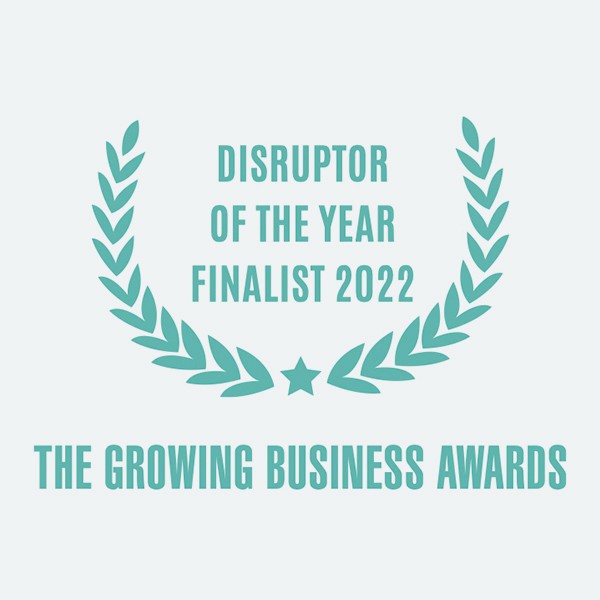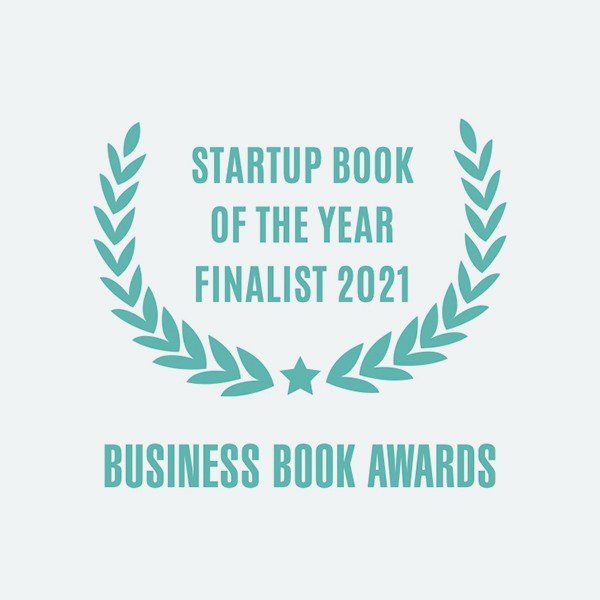
Pre-Seed Funding Pitch Deck
You’ve just started your business. You may not even have a product yet. But you need pre-seed funding to kickstart your business. Your pre-seed funding pitch deck plays an essential role as it helps to show what you and your startup might achieve – even when you have little to show at the moment.
At Robot Mascot, we are experts in helping startups get investment-ready with a variety of powerful and persuasive fundraising assets, including that all-important pre-seed funding pitch deck.
Founders from all over the world have been supported to raise investment via our global award-winning investor pitch service, PitchReady. As a result of our help in preparing their investment materials, our founders find they are 40 times more likely to raise investment.
This page will tell you exactly what you need to include in your startup marketing plan, so you’re ready to hold up to investor scrutiny.
Jump to the following sections:
The key to a successful pre-seed pitch is in how it’s different from a seed funding pitch deck. While the two can be similar, at the pre-seed stage, you may not have a product or an established customer/user base, so the pitch deck’s focus is primarily on you, your team and your idea. The deck should be aimed at pre-seed VCs, business angels and high-net-worth individuals and you will probably be asking for up to £500k although some pre-seed rounds can stretch into the millions.
The best pre-seed pitch decks will help tell your story and the story of your idea as well as showcase your future plans and articulate why you can be trusted by an investor to turn your idea into a reality.
Our PitchReady service will help you develop your pre-seed funding pitch deck. Using our trusted and proven methodology, our clients become 40x more likely to secure investment. Below are the main elements that would be considered when developing a pre-seed pitch deck.
The Value Proposition
A pre-seed pitch should focus on the vision and the potential. Crafting your startup’s value proposition, formulating its vision and mission statements, and defining the specific customer problem that you aim to address is absolutely critical.
Your Superstars
Whether you’re a sole founder or part of a co-founding team, the second key aspect to address is the people involved. This includes the visionaries who are to drive your company in its early stages. Understanding the profile of the founder(s), key team members and strategic advisors involved is essential in conveying the business’s potential to succeed. We will help you bring their skills to the fore and make them the heroes of your story.
The Problem, The Solution
We will help you precisely define the problem you intend to solve. One of the earliest steps in building a business is crafting a clear problem statement. Next, we will help you communicate how and why your solution solves that problem. It sounds simple, but crafting this in a way that quickly resonates and inspires investors is often harder than it seems.
Your Market, Your Competition
The success of your business will depend on your ability to dominate your sector. Understanding your market positioning and the market share required to deliver satisfactory returns to investors is vital. We will help you define your TAM, SAM and SOM numbers and develop competitor analysis to create a compelling case for investment
The Financials
Even at this early stage, it’s crucial to demonstrate to potential investors that you’ve got a clear plan for the commercialisation of your concept and that you understand the future revenue potential of your business. This is a key part of showing them that you’re a founder they can feel confident about investing in.
We will help you present your projected figures in a clear and compelling way to convince investors that you’re a good bet.
Pre-Seed & People
At this stage of the startup journey, investors are primarily looking for the right individuals. This is why our book is called, Investable Entrepreneur not Investable Ideas. Investors want to work with a founder who possesses the vision and charisma to make their business a success. That’s why it is essential to showcase you and your team: who they are, what they’ve done, where they’ve been and what they can do.
And don’t forget, you’re sending or presenting your pre-seed pitch deck to human beings. Yes, numbers are important, but people buy people and pre-seed investors love investable teams – teams that are in it for the long term, just like they are.
However, a team does not always mean a co-founding team, and we do not suggest a sole-founder seeks a co-founder specifically for investment. In our experience, this often leads to a falling out and a difficult and distracting legal process. The bond between co-founders has to be as strong as (if not stronger than) a marriage, or it will end in a messy divorce.
As a sole-founder considering your team for a pre-seed pitch deck, you should think about the advisors and consultants supporting you, as well as freelancers and colleagues who are working on this project alongside you. The most important thing is to showcase to investors that you’re not alone and have others enrolled in your vision.
What is a pre-seed pitch deck?
A pre-seed pitch deck is a concise presentation that outlines the key elements of a startup’s business concept, team, market opportunity and strategy. It is used to attract early-stage investors and provide them with a clear understanding of the startup’s vision and potential for growth.
What does a pre-seed pitch deck look like?
A pre-seed pitch deck is a carefully crafted presentation that conveys a startup’s vision and potential to investors.
Your deck needs to tell a compelling story, the story of your business – past, present, and future. That’s why we advise that you approach it like any good storyteller and use the five-act structure.
- Act 1 – Exposition
- Act 2 – Rising Action
- Act 3 – Climax
- Act 4 – Falling Action
- Act 5 – Denouement
Read more about the Five-Act Structure.
Throughout, the deck should maintain a cohesive design theme, using fonts, colours and layouts consistent with the startup’s brand. This approach makes the presentation both visually engaging and informative, enhancing its persuasive appeal to potential investors.




What should be included in a seed pitch deck?
A seed pitch deck should include the following key elements to effectively communicate your startup’s value proposition and potential to investors:
- Introduction: Begin with a clear and engaging title slide that features your startup’s name, logo, and a brief tagline or description.
- Problem Statement: Define the problem your startup aims to solve and explain its significance. Use concise text and visuals to illustrate the problem.
- Solution: Present your solution to the problem. Use diagrams, graphics, or flowcharts to help investors understand how your product or service works.
- Market Opportunity: Showcase the market size, growth trends, and target demographics. Utilise data visualisations like charts and infographics to highlight market potential.
- Traction: Highlight key milestones and achievements to demonstrate traction. Include metrics such as user acquisition, revenue, partnerships, or product development progress.
- Business Model: Explain your revenue model, pricing strategy, and monetization plans. Provide a clear path to profitability.
- Competitive Analysis: Present a competitive landscape, including key competitors and your unique value proposition. Use SWOT analyses or visual grids to highlight strengths, weaknesses, opportunities, and threats.
- Team: Introduce the core team members with their roles, expertise, and relevant experience. Highlight how your team is well-suited to execute the startup’s vision.
- Financial Projections: Provide revenue forecasts, growth projections, and an overview of expenses. Use charts, graphs, or tables for clarity.
- Use of Funds: Specify how you intend to use the investment. Break down the allocation of funds into categories like product development, marketing, and hiring.
- Exit Strategy: Outline potential exit strategies for investors, such as acquisition opportunities or plans for going public.
- Conclusion and Ask: Summarise your pitch, emphasising your startup’s value proposition. Clearly state the amount of funding you are seeking from investors.
- Contact Information: Provide your contact details, including email addresses, social media links, and any upcoming events or meetings where investors can connect with you.
- Appendix (Optional): Include additional supporting documents like customer testimonials, case studies, or product demos if they enhance your pitch.
How long should a pre-seed pitch deck be?
A pre-seed pitch deck should typically be concise and to the point. It’s recommended to aim for a total length of approximately 15-20 slides. This length allows you to cover all the essential elements of your startup’s pitch effectively while maintaining the audience’s attention.
In total, you should have three versions of your pitch:
Investor pitch
The investor pitch is a 15- to 20-slide deck. It’s the most brochure-esque form of the pitch, with content that can be consumed and understood without the founder being present to convey the information and add detail.
Presentation pitch
This is similar to an investor deck, with much of the content removed, leaving mostly graphics and a few bullet points. A presentation pitch is perfect for pitch events and boardroom presentations, as it draws the investors’ attention to you while giving you a visual cue and the investor a visual aid to contextualise what you are saying.
Teaser pitch
This pitch doesn’t give away the details of the business model. Instead, it focuses on the solution and the vision of your company. It’s often used in initial conversations with investors to generate interest without giving too much detail away.
What exactly is pre-seed?
‘Pre-seed’ refers to the earliest stage of funding that a startup can receive. It occurs before the startup has typically secured any formal seed funding, venture capital investment or angel investment. Pre-seed funding is often used to cover initial expenses such as market research, product development, and building a founding team.
During the pre-seed stage, entrepreneurs may rely on personal savings, small loans, or investments from friends and family to get their business off the ground. The purpose of pre-seed funding is to validate the startup concept, develop a minimum viable product (MVP), and prepare the business for further investment rounds.
Pre-seed funding is often essential for a startup to prove its concept’s viability and demonstrate early traction, which can make it more attractive to potential seed investors or venture capitalists in later stages of funding. It typically covers the earliest expenses required to bring a startup from an idea to a functional business.
What is the difference between seed and pre-series A?
The primary difference between a seed round and a pre-series A round is the stage of a startup’s development and funding needs. Seed funding is the initial injection of capital to kickstart a startup, while pre-series A funding comes after the seed stage and helps startups prepare for more substantial growth and the Series A round.
What is the difference between seed, pre-seed and series A?
Pre-seed funding is the earliest stage focused on idea validation, seed funding supports early growth and product development, and Series A funding is geared towards scaling and expanding a proven business.
Each round serves a distinct purpose in a startup’s journey and corresponds to different stages of development and investor expectations.
What is the difference between pre-seed and bootstrap?
The primary difference is that pre-seed involves seeking external funding to launch and validate a startup, while bootstrap means self-funding and growing a business without relying on external capital.
Each approach has its advantages and disadvantages, and the choice often depends on the startup’s specific circumstances and goals.






Copyright ©Robot Mascot Ltd. All rights reserved.


